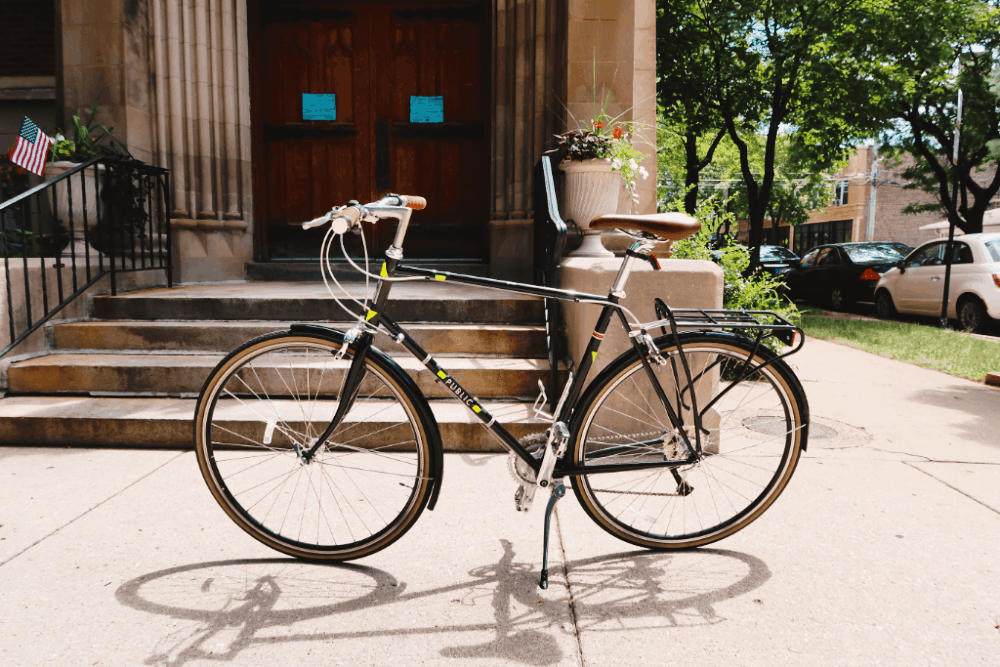Riding a bike isn’t just good exercise. It’s good for your soul, it’s good for your wallet, and it’s good for the environment. It is also easier on our joints than some weight-bearing exercises like running, walking, or even elliptical training.
A relaxed, comfortable position on your bike goes a long way to improve your workout and experience. To accomplish this, it is essential that the bike is the right size and fits you.
If you are a cross country rider or racer, the best bet is to visit a bike shop that offers full bike fitting to ensure that your body fits the bike’s dimensions. It can be a fantastic difference what a minor adjustment in handlebar height or the position of the saddle can make when riding long distances. Our favorite bike shop for a full bike fitting is Turin Bicycle at 4710 North Damen.
But when purchasing a bike for riding around town and workouts on the path, the choice of sizes is less specific; generally, the choices are extra small, small, medium, and large. The guidelines used to determine what size to buy is the height of the rider. If possible, it is best to take a test ride with any bike you are considering purchasing.
The following are general bike fit and cycling guidelines to get you started.
- Seat Height – When sitting on the bike seat with one foot as close to the ground as possible (while the foot is level to the floor) there is a slight (15 – 20 degree) bend in the knee.
- Handlebar Height – Handlebars at the same level as or slightly above the seat is a good place to start when deciding on a bike. This position allows for a mildly aggressive posture on the bike without requiring too much flexibility of the rider.
- Body Position on the bike – Most (75%) of the bodyweight should be on the seat with the SITS bones on the widest part of the saddle. While pedaling, the pelvis should be stable on the seat; without rocking from side to side. If possible, the rest of the body is positioned as follows:
- Hips are hinged forward as if the trunk is folding over a stick.
- Spine – In Neutral, with the spine following its normal curves – a slight inward curve (lordosis) at the low back and mild outward curve of the mid back (kyphosis).
- Shoulder Blades and Arms – Chest is open with shoulder blades pulled slightly back. Elbows are pointed backward and bent slightly for absorbing shock through your arms, with the wrists in line with forearms.
- Head follows the spine with the chin level and gazes forward.
- Pedal Stroke
- The ball of the foot is centered on the pedal with the foot parallel to the floor. The pedal stroke occurs through the entire 360-degree circle of the crank arm. As one foot pushes down and steps over the pedal, the other is sweeping backward to help with the full circular stroke.
- The knees move up and down when pedaling, staying in line with the hips instead of moving out to the side.
We hope this gives you a better idea of how to find a bike that fits, and how to position yourself so you don’t feel pain, strain or tension on your while riding your bicycle. Remember, while considering your bike fit it is most important to feel stable, relaxed and comfortable.
If you have pain or don’t feel safe while riding your bike, we can help!



Comments